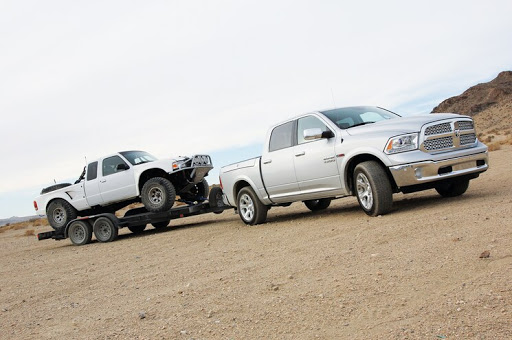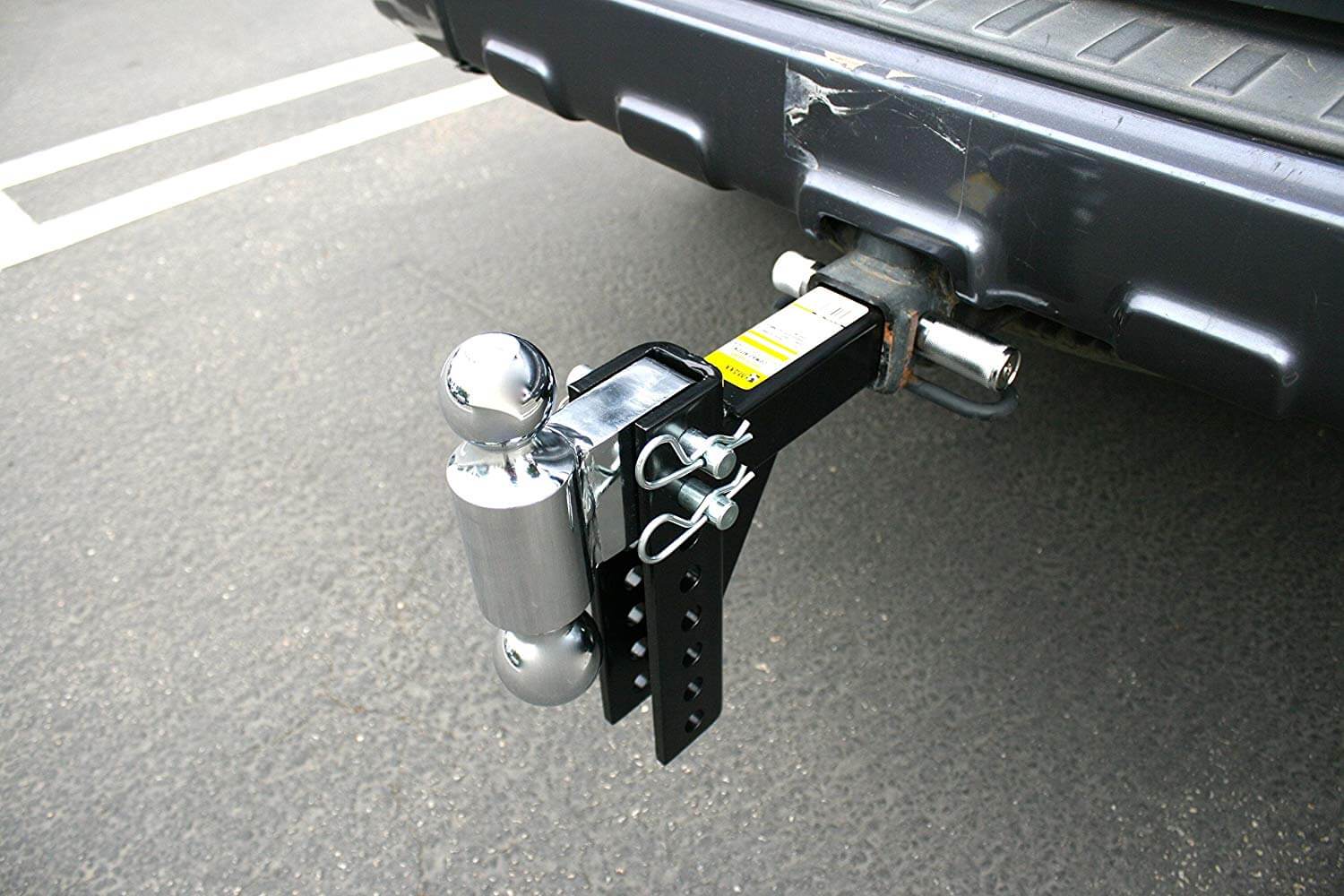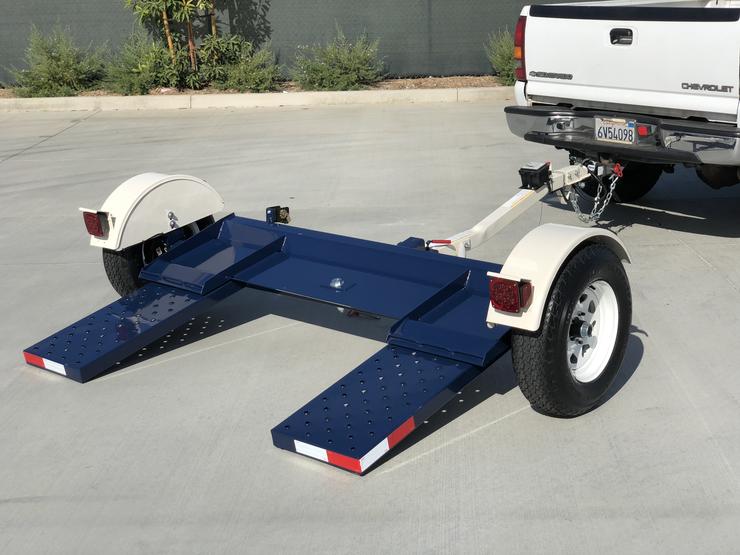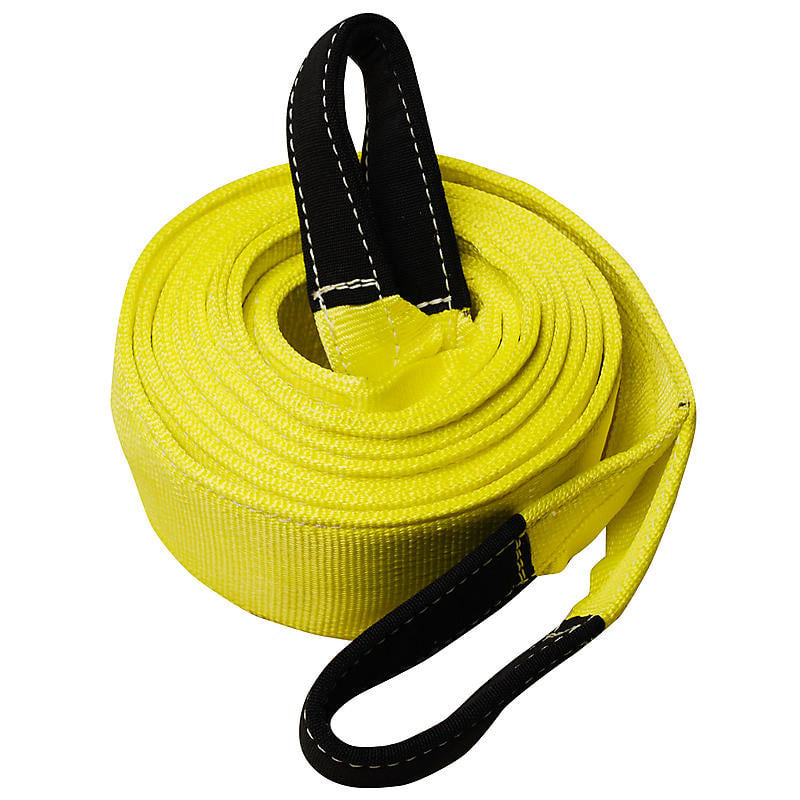How to Tow a Car: Everything You Need to Know
Posted on April 16, 2021
Towing a car might not be something you think about often, but it’s a handy skill to have, especially when you're facing unexpected breakdowns or need to transport a second vehicle. Whether you’re planning a long road trip or preparing for an emergency, knowing how to tow a car can save you a lot of hassle.
It doesn’t have to be overwhelming either—once you understand the basics and follow the right steps, towing becomes much more manageable.
In this blog post, we’ll break down everything you need to know about towing a car, from the equipment you'll need to the safety tips that’ll keep you and your vehicle secure on the road.

Safety and Basic Precautions
When towing a car, safety should always come first. One important rule to follow is to never let anyone stay inside the vehicle that’s being towed. It might seem like a convenient option, but it’s both dangerous and illegal.
If the tow vehicle has no extra room for passengers, it’s better to rethink the whole operation. In case something goes wrong during the tow, the last place anyone should be is inside the towed vehicle.
Another key precaution is to engage the ignition of the car being towed. This step prevents the steering wheel from locking, which ensures smooth towing without sudden jerks or movements.
Additionally, don’t forget to turn on the parking lights of the towed vehicle, especially when towing at night. This makes the car more visible to other drivers and reduces the risk of accidents.

Vital Things to Consider Before and During Towing a Car
Before towing a car, you must have the right tools and know-how. Make sure you're using reliable equipment like tow ropes or a tow dolly and double-check that everything is securely fastened. To discuss further, here are things to consider when towing a car.
1. Check Your Vehicle’s Maximum Towing Capacity
You can find this information in your owner’s manual, on the manufacturer’s website, or on the label inside the driver’s side door jamb.
Keep in mind that the towing capacity includes not only the weight of the vehicle being towed but also any cargo and passengers. Exceeding this limit can lead to mechanical issues and increase the risk of accidents, so always stay within the recommended capacity for safe towing.
2. Check Your Tow Hitch Specification
Does your vehicle have a tow hitch? While many SUVs and trucks come with one pre-installed, most cars don’t. If you need to add one, make sure it's securely attached to the chassis of the vehicle.
Never attempt to tow a vehicle without a properly installed tow hitch, as it's the only safe and reliable method. If you're unsure about installing one yourself, a certified CarHub service technician can handle the installation to give you peace of mind.

3. Properly Connect the Tow Bar
To properly connect the tow bar, start by aligning it with the hitch on the towing vehicle and securely latching them together.
After that, attach the safety chains in a crisscross pattern under the tow bar for added security in case of an accidental detachment. Make sure all connections, including the electrical wiring for brake lights and turn signals, are firmly attached.
4. Ensure Proper Weight Distribution
When loading a vehicle onto a flatbed tow truck, make sure it’s centered, and the weight is spread evenly across the bed. This helps maintain balance and prevents damage during transit.
If you're using a tow dolly or two-wheel towing, ensure the vehicle’s wheels are securely fastened and that the weight is not concentrated too heavily on one side.
5. Use Wheel Chocks Correctly
These sturdy blocks help prevent the towed vehicle from rolling off the trailer, keeping it secure during transit. Wheel chocks are specifically designed to provide stability, acting as a safeguard if any chains or straps happen to come loose.
Properly placing wheel chocks ensures that your vehicle stays put, reducing the risk of accidents and making your towing experience much safer.
6. Use Extended Towing Mirrors
When towing a car, using extended towing mirrors is essential for safety. Standard mirrors often don't provide enough visibility to cover blind spots, which can be a major risk.
Towing mirrors are specifically designed to help drivers see further back and better monitor the area around their trailer. Many towing mirror extensions can easily attach to your vehicle’s factory side mirrors, improving your overall visibility.
7. Use Safety Chains
Using safety chains when towing a vehicle is an important precaution that adds an extra layer of security. Even if your initial towing method seems secure, things can go wrong—equipment can fail or detach unexpectedly. Safety chains help prevent the towed vehicle from rolling away if a hitch fails, keeping it safe and secure.
8. Practice Safe Driving Habits
Towing can change how your vehicle handles and increase your stopping distance, so always drive at a safe speed and keep plenty of space between your vehicle and others on the road. Avoid sudden braking or sharp turns, as these can make the towed car sway or become unbalanced.
9. Towing Laws and Regulations
Understanding towing laws and regulations is essential for safe and legal towing practices. Different areas have specific rules, so it’s important to familiarize yourself with the requirements where you live. Here are some key guidelines to keep in mind:
- Weight Limits: Every vehicle has a maximum weight it can safely tow, including the towed vehicle and any cargo.
- Speed Limits: Towing affects your vehicle’s handling and stopping distance, so it’s crucial to drive at a safe speed.
- Lighting Requirements: Ensure that all lights on both the towing vehicle and the towed car are working, including brake lights and turn signals.
- License Requirements: In certain places, you may need a special license to tow a vehicle or trailer over a specific weight.
3 Types of Towing
When it comes to towing, you need to know the different methods available so you can choose the one that best fits your needs. Here are the most common types of towing:
1. Flatbed Towing
Flatbed towing involves placing the entire towed vehicle on a flat, horizontal platform attached to the tow truck. This method reduces the risk of damage since the car is completely off the ground and securely fastened.
Flatbed tow trucks use hydraulics to easily lower and raise the platform, making it simple to load and unload vehicles.

2. Dolly Towing
Dolly towing requires some planning, as it's not typically a last-minute solution. This method lifts the front tires of the towed car off the ground, reducing wear on the driveline compared to other towing methods. It also prevents the towed car from pushing forward during stops, as the dolly absorbs much of the inertia.
3. Two-Wheel Towing
Also called dinghy towing or flat towing, this method attaches the towed vehicle to the tow truck with all four wheels on the ground. A tow bar lifts and secures the front wheels of the towed vehicle, allowing the rear wheels to roll freely.
This approach is commonly used for vehicles designed for flat towing, like manual transmission cars and some RVs. It’s best for short distances and can save on fuel compared to other towing methods.
4 Ways to Tow a Car
There are different ways to tow a car and here are four of the most common ways:

1. Tow Car Using a Tow Dolly
A tow dolly is a popular tool for towing vehicles, especially front-wheel-drive cars, since it doesn’t require removing the driveshaft. Here’s a simple guide to using a tow dolly:
- Connect the tow dolly to your truck or car’s hitch. Hand-tighten the coupler and ensure it’s secure by slowly driving forward to test the connection.
- Align the towed vehicle with your truck to make loading easier. Always load the car facing forward to prevent swaying or whipping.
- Drive the vehicle onto the dolly ramp. If the car won’t run, you’ll need help to push it up the ramp.
- Secure the car by placing the front tires against the wheel stops and strapping them down with tire straps. For extra security, use heavy-duty chains around the car's frame.
- Disengage the parking brake of the towed vehicle so the rear wheels can spin freely, preventing damage during towing.

2. Tow Car Using a Trailer
Using a trailer is often the best option for towing a vehicle, as it provides a stable and secure way to transport cars. With this method, the towed vehicle is driven directly onto the trailer and strapped down, eliminating any concerns about erratic behavior that could affect the tow vehicle.
Keep in mind that you’ll need a truck to use a tow trailer. The combined weight of the towed car and the trailer can be significant, and most cars or smaller SUVs don’t have the necessary torque to handle this safely and effectively.

3. Tow Car Using a Tow Bar
Tow bars are another effective towing option, shaped like a ‘V’ and designed for flat towing. They attach to the tow vehicle using a tow hitch.
Unlike a tow dolly, which raises the tires, a tow bar keeps all wheels on the ground. One advantage of using a tow bar is that it allows for pushing at stops, but this can affect the performance of the towing vehicle.
4. Towing a Car with Chains
Using a tow rope or tow chain should be a last resort and is best suited for short, slow distances. This method can be risky, as it doesn’t provide the same level of stability as other towing options. If you’ve exhausted all other options and need to tow a car with a truck, here are a few key points to keep in mind:
- Secure Attachment: Check that it’s rated for the weight of the towed car to avoid breakage.
- Communication: Use hand signals or two-way radios to coordinate stops and turns.
- Speed and Distance: Keep your speed low and avoid sudden movements. Towing with a chain can lead to jerky motions that might damage either vehicle.
- Legal Considerations: Be aware that some areas have specific laws regarding towing with chains, so it’s important to check local regulations before proceeding.
Remember, using a tow chain should only be done when absolutely necessary and with careful attention to safety.

Can You Tow a Vehicle with a Tow Strap?
The short answer is no. Tow straps are designed for pulling vehicles over very short distances, such as getting a car out of a ditch or stuck in mud. They are not meant for towing a vehicle down the road. Using a tow strap for longer distances can be dangerous and may result in damage to both vehicles.
For safe and effective towing, it's best to use proper equipment like a tow dolly or flatbed tow truck. Always prioritize safety and choose the right method for the job.

Can Electric Vehicles Tow a Trailer?
Currently, fully electric vehicles (EVs) aren’t quite ready for prime-time towing. While they are improving, hybrids are generally a safer choice for towing at this time. However, it’s clear that EVs are making strides in this area and will likely reach their towing potential soon.
For a detailed breakdown of the towing capacities of popular EVs and hybrids, resources like Trailer Life can provide valuable insights to help you choose the right vehicle for your towing needs.
Get Prepared for Your Next Towing Adventure
If you want to tow a vehicle with your car, SUV, or truck, a little research is essential to do it right. Once you’ve got it figured out, you’ll feel a great sense of confidence in your automotive skills.
At CarHub, we have plenty of great options for towing, including the RAM 1500, Jeep Grand Cherokee, Chrysler Pacifica, and Chrysler Grand Caravan. Ready to take one of these impressive vehicles for a test drive? Book an appointment today to chat with a CarHub Product Advisor. Contact us now.
